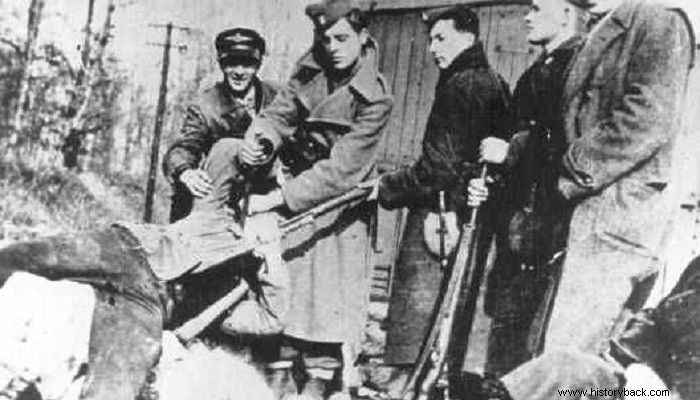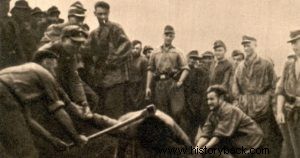
The infamous, euphemistically, "concentration camp" of Jasenovac has left behind indelible memories and is still a monument of hatred between Serbs and Croats. The camp was created in August 1941 near the village of the same name in Slovenia which then belonged to the Croatian state.
Not by chance was the camp called "Auschwitz of the Balkans" rivaling and perhaps surpassing in brutality Auschwitz itself. In Jasenovac, the Croatian Ustasi murderers literally slaughtered tens of thousands of people, Serbs, Jews and Roma. Jasenovac was not a camp but a complex of five camps built on an area of 210 square kilometers on the banks of the Sava and Una rivers. The largest "sub-camp" was that of the "Brickyard".
The Croats even held contests to see who could slaughter the most in a certain amount of time. So on the night of August 29, 1942, Petar Briča "managed" to cut the throats of 1,360 people... Ande Zrinuzić Sipka killed another 600 people the same night, while Mile Friganović, who later revealed the fact, had slaughtered over 1,000 people.
Frijanovic also revealed the torture he subjected an old Serb to make him shout "long live Pavelic" (Ade Pavelic was the head of the Croat criminal Ustasha regime). Friganovich cut off the old man's ears and nose. Then he gouged out his eyes, opened his chest at the level of the heart and finally cut his larynx.
The gruesome murders did not stop in Jasenovac. Usually the Croats did not kill, at least directly, strong, able-bodied men who had been sentenced to terms of less than 3 years imprisonment. All other prisoners were scheduled. The method of systematic extermination of prisoners varied from sub-camp to sub-camp. One of the favorite methods of the Croats was to burn the prisoners alive together with corpses in the special ovens - crematoria they had built. At the same time, the method of extermination in gas chambers tested by the Germans was also used.
Manual extermination, however, prevailed with the Croats using every tool for this purpose, from knives, to saws and chisels, exhausting their morbid imagination. At Granik's wharf, on the Sava River, for 20 consecutive nights, people were killed by blows to the head from tools. The corpses were thrown into the river. But later the Croats applied a more torturous method. Their victims were tied up in pairs. Then they cut their bellies open with a knife and threw them into the river to die a painful, slow and torturous death.
In the sub-camp of Grandina, the preferred method was killing with sledgehammers. Thousands of Roma were exterminated there. In Mlaka and Yamlands mainly women and children were murdered. The women were in a hurry. Many had their breasts cut off while pregnant women died horribly with their bellies open, watching their fetuses being torn to pieces. For the Croats, however, this was a "holy mission" which they undertook with pride. Many did not hesitate to make necklaces of severed human limbs which they wore with pride.
“We entered the camp, in an old factory. Terrible conditions... everywhere screams, cries, wailing... Worst of all... a room with about 50 children, half dead, the rest dying..." reported German (Austrian) general von Hortenau, who served as a liaison between Germany and the Croatian state . The exact number of those murdered in Jasenovac is not known . Most estimates speak of 700,000 victims. Other sources speak of 1,400,000 dead. Newer research significantly lowers the number of victims. In any case, this has nothing to do with the horror that prevailed there and is an eternal stain on Croatian history.

Victims of the Croats on the banks of the river Sava.


i 

